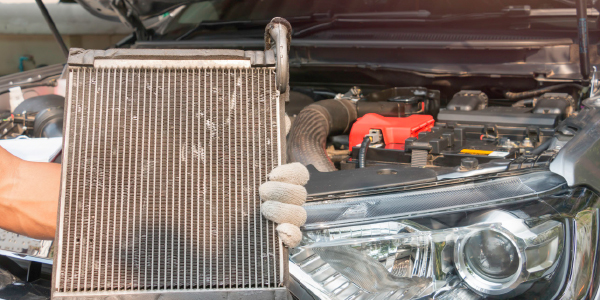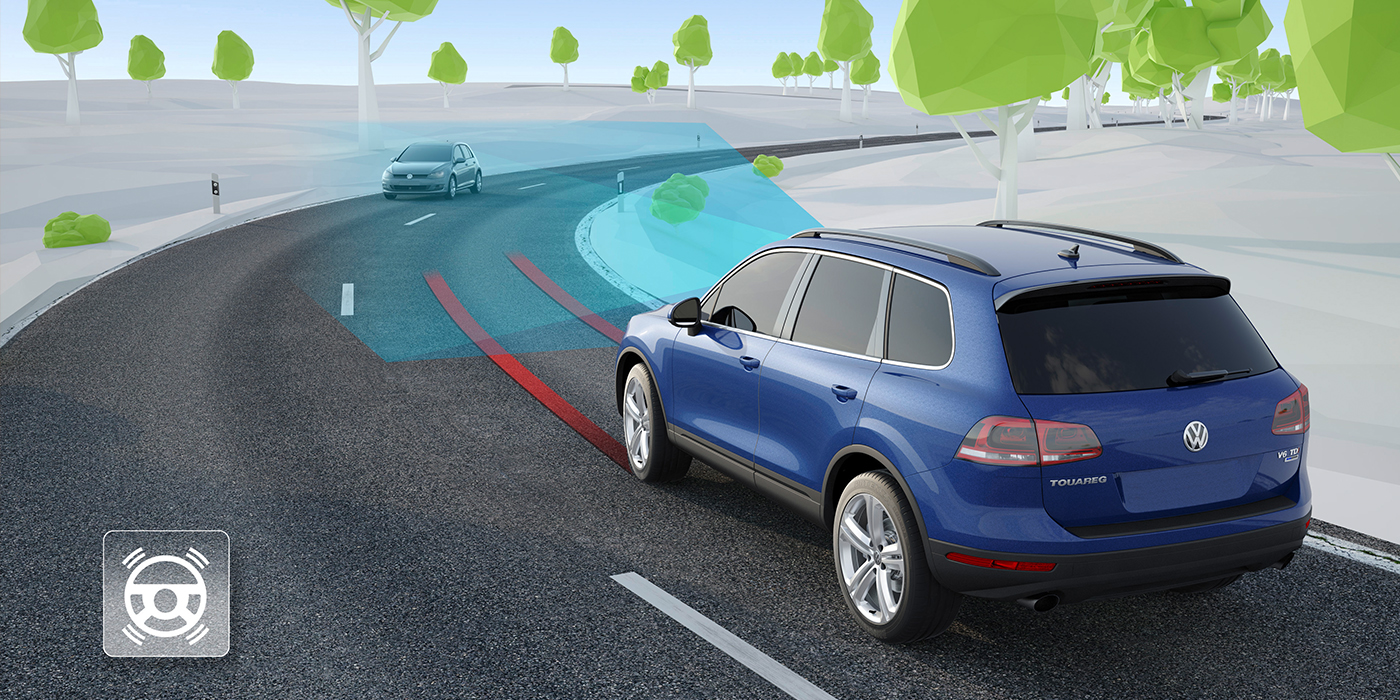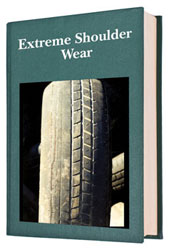 As a rule, all tires should wear evenly across the full face of the tread as long as wheel alignment is correct, the tires are maintained at the recommended inflation pressure, and the vehicle is driven sensibly. Any kind of tire wear that deviates from the norm, therefore, usually indicates trouble.
As a rule, all tires should wear evenly across the full face of the tread as long as wheel alignment is correct, the tires are maintained at the recommended inflation pressure, and the vehicle is driven sensibly. Any kind of tire wear that deviates from the norm, therefore, usually indicates trouble.
SHOULDER WEAR
Take heavy outer shoulder wear, for example. This kind of wear can be caused by camber or toe misalignment, which in turn may be the result of worn control arm bushings, ball joints or tie rod ends, or possibly a bent strut, steering arm or spindle. If a thorough inspection of the steering and suspension reveals no faults, the heavy wear probably means somebody has an aggressive driving problem and likes to push the limits of adhesion when taking corners.
Rapid shoulder wear on the front tires may also be “normal” on some 4×4 trucks, vans and minivans because of the vehicle’s steering geometry. All vehicles are supposed to have a certain amount of “Ackerman” built into the steering linkage so the front wheels will toe-out with respect to one another when they are turned. 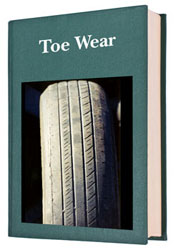 Caster can have an effect here, too. Caster causes the wheels to lean or tilt when steered, which changes camber (called “camber roll”).
Caster can have an effect here, too. Caster causes the wheels to lean or tilt when steered, which changes camber (called “camber roll”).
CAMBER OR TOE WEAR
Shoulder wear on the inner or outer edge of a tire is often interpreted as camber misalignment. Too much positive camber can accelerate wear on the outer shoulder of a tire just as too much negative camber can accelerate wear on the inner shoulder.
Underlying causes can include bent struts, mislocated strut towers, bent spindles, collapsed control arm bushings, even weak springs. But camber misalignment usually won’t wear a tire as much or as quickly as toe misalignment will. Why? Because toe misalignment scrubs the tires as they roll. Only 1/8 inch of toe misalignment front or rear will scrub the tires sideways 28 feet for every mile traveled. That may not sound like much, but over thousands of miles it can really wear away the rubber.
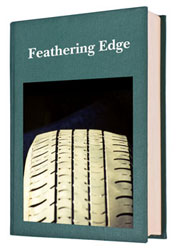 If rear toe (or axle alignment) is off and creates a thrust angle to either side of the vehicle’s centerline, it will cause the vehicle to lead towards the opposite side. To keep the vehicle going straight, the driver has to steer slightly off-center. This, in turn, causes the front wheels to toe-out a bit (Ackerman, remember?) which creates toe wear on the front tires.
If rear toe (or axle alignment) is off and creates a thrust angle to either side of the vehicle’s centerline, it will cause the vehicle to lead towards the opposite side. To keep the vehicle going straight, the driver has to steer slightly off-center. This, in turn, causes the front wheels to toe-out a bit (Ackerman, remember?) which creates toe wear on the front tires.
UNEVEN WEAR
If you read a tire and find more wear in the center area of the tread than the side ribs, the tire may be too wide for the rim or it may be suffering from chronic underinflation. A low profile tire that’s too wide for a rim may not make full contact with the pavement at the side ribs, causing the center of the tread to wear more rapidly. Likewise, a tire that is too narrow for a rim may suffer more wear on the outer ribs of the tread than the center.
When a tire is overinflated, it tends to bulge out and experience more wear in the center area of the tread. Underinflation shifts the weight carried by the tire to the 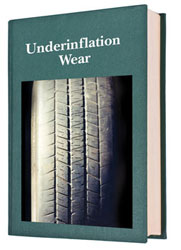 edges of the tread causing the shoulders to wear more than the center.
edges of the tread causing the shoulders to wear more than the center.
UNUSUAL WEAR
Sometimes you’ll read a set of tires that show uneven wear, yet are aligned and inflated properly. The problem here may be the tire itself.
Some low profile tires (mostly performance tires), tend to develop uneven wear patterns because of their belt and tread design. As the tire rolls along, the deflection and squirming of the tread produces harmonics that cause certain areas of the tread or ribs to wear more than others. The wear pattern can be further compounded by other factors such as toe misalignment, wheel imbalance, wheel runout, underinflation or lack of rotation.
After awhile, a “heel and toe” or “washboard” wear pattern may develop that generates annoying noise and vibrations at speeds above 40 mph. Once the wear pattern is established, it’s too late to reverse it by rotating the tires. The only cure is 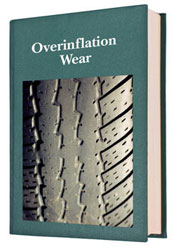 to replace the bad tire(s), and/or switch to another brand or style of tire.
to replace the bad tire(s), and/or switch to another brand or style of tire.
REAR TOE WEAR
If you find a diagonal wipe wear pattern on the rear tires of a front-wheel-drive car or RWD car with an independent rear suspension, it usually indicates an unequal toe problem. Because there’s no steering linkage, the rear wheels can’t self-center themselves so one or both tires are forced to drag along producing a diagonal wear pattern on the tread.
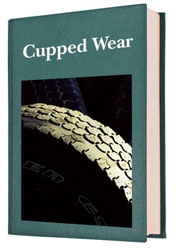 CUPPED WEAR
CUPPED WEAR
A cupped or scalloped wear pattern on a tire may be caused by wheel imbalance, excessive wheel or tire runout, weak shock absorbers or struts, or worn suspension parts such as control arm bushings or ball joints. The tire develops a cupped wear pattern because it bounces up and down as it rolls down the highway. Cupped wear caused by tire vibrations may also be the result of an out-of-round wheel or tire.


